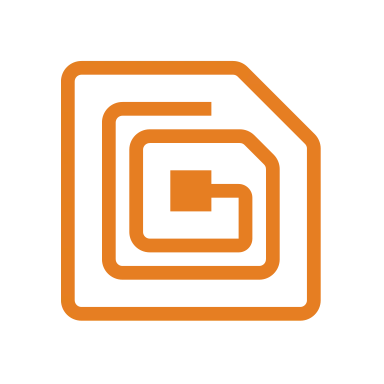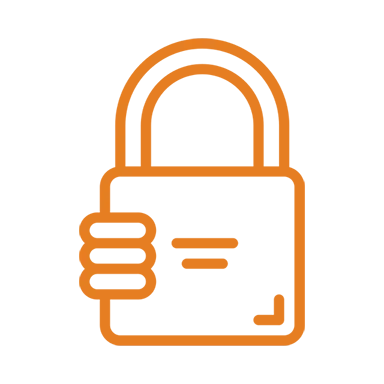RFID in Healthcare [Updated for 2025]
RFID adoption and usage continues to grow within the healthcare sector. Check out how medical facilities and healthcare providers are deploying RFID to improve inventory accuracy, regulate equipment utilization, and ensure patient safety.
The Current State of RFID in Healthcare
Did you know U.S. hospitals are expected to lost approximately $4,000 worth of equipment per bed in 2025 due to misplacement or theft? For healthcare facilities, losses like this can be quite destructive. To stave off such losses, facilities need some kind of tracking system. This is where RFID comes into play.
From asset tracking and patient identification to medication management and supply chain optimization, RFID solutions are revolutionizing traditional healthcare practices. The current state of RFID in healthcare reflects a dynamic ecosystem where RFID-enabled systems and applications are increasingly integrated into clinical workflows, enabling healthcare organizations to enhance patient safety, streamline operations, and improve overall quality of care.
84% of healthcare organizations that deploy RFID use it to review inventory content and track trays and boxes across the hospital, noting an 82% improvement in inventory tracking capabilities, a 73% increase in data availability to optimize kit or tray contents, along with a 64% improvement in managing drugs for recalls. (Source: MedTechIntelligence.com)
Accurate inventory information is crucial for efficient supply chains. Traditional inventory count methods require intensive labor and are often inaccurate. RFID has improved inventory accuracy significantly by processing a wide range of data in just a few minutes. It eliminates the need for manual scanning of barcodes on individual objects and eliminating the need for touch-counting every object. RFID is the future of inventory tracking. Its many uses in retail are only limited by the imagination of their users.
Let’s explore the current landscape of RFID technology in healthcare, its diverse applications, benefits, and the transformative impact it is having on healthcare delivery and patient outcomes.
Table of Contents
- How Does RFID Work in Healthcare?
- What are Some Use Cases of RFID in Healthcare?
- Regulatory Requirements for RFID in Healthcare
- What Types of Equipment Can You Use RFID for?
- How Does RFID Help in Medical Inventory Management?
- Pros and Cons of RFID in Healthcare
- How Can Healthcare Organizations Get Started with RFID?
How Does RFID Work in Healthcare?
RFID technology can be deployed into healthcare in a numbers of ways. By utilizing electromagnetic fields to automatically identify and track objects or individuals wirelessly, healthcare teams can track a wide range of inventory, assets, and equipment. Here’s a breakdown of how RFID works in healthcare:
RFID Tags
RFID tags are small electronic devices that consist of a microchip and an antenna. These tags can be attached to various objects, such as medical equipment, medication packaging, patient wristbands, or even staff ID badges. RFID tags come in different forms, including passive, active, and semi-passive, each suited for specific applications based on their power source and functionality.
RFID Readers
RFID readers, also known as interrogators, emit radio waves and receive signals from RFID tags within their vicinity. These readers can be stationary, handheld, or integrated into other devices, such as smartphones or tablets. When an RFID tag comes within range of a reader, the reader detects the tag’s unique identifier and communicates with it via radio waves.
Data Transmission
When an RFID tag receives a signal from a reader, it responds by transmitting its stored data back to the reader. This data typically includes a unique identifier that identifies the tagged object or individual. The RFID reader captures this data and sends it to a central database or software system for processing and analysis. Additionally, RFID systems, such as Edgefinity IoT, can work with other kinds of modern tech such as Bluetooth Low Energy, RTLS, or Ultra Wideband.

What are Some Use Cases of RFID in Healthcare?
RFID offers a wide range of use cases in healthcare and hospitals, revolutionizing various aspects of patient care, operational efficiency, and asset management. Here are some key use cases of RFID in healthcare and hospitals:
- Patient Identification and Tracking: RFID wristbands or tags are used to accurately identify and track patients throughout their healthcare journey. This includes admissions, transfers, surgeries, and discharge processes. RFID-enabled patient tracking systems enhance patient safety by reducing the risk of identification errors and improving staff visibility into patient whereabouts.
- Asset Tracking and Management: RFID tags are attached to medical equipment, devices, and supplies to enable real-time tracking and management. Hospitals utilize RFID technology to locate assets, monitor usage patterns, and streamline inventory management processes. This ensures that critical equipment is readily available when needed, reducing equipment loss and improving resource utilization.
- Medication Management: RFID technology is employed to enhance medication management processes, including inventory control, expiration date monitoring, and medication administration verification. RFID tags applied to medication packaging enable automated inventory tracking, reducing medication errors and improving patient safety by ensuring the right medication is administered to the right patient at the right time.
- Temperature Monitoring and Cold Chain Management: RFID tags are utilized for temperature monitoring and cold chain management of temperature-sensitive medications, vaccines, and biological samples. RFID-enabled systems provide real-time visibility into temperature conditions during storage and transportation, ensuring compliance with regulatory requirements and maintaining product integrity. Cryogenic labels combined with RFID can be used for managing assets in environments where extreme cold temperatures are a norm, such as in biomedical research, pharmaceuticals, and food storage.
- Surgical Instrument Tracking: RFID tags are attached to surgical instruments and trays to track their usage, sterilization status, and location within the hospital. RFID-enabled surgical instrument tracking systems streamline surgical workflows, reduce the risk of lost or misplaced instruments, and improve patient safety by ensuring that only properly sterilized instruments are used during procedures.
- Blood and Tissue Tracking: RFID technology is used to track blood products, tissue samples, and other biological materials throughout the healthcare supply chain. RFID tags applied to blood bags and tissue containers enable efficient inventory management, traceability, and compliance with regulatory requirements, ensuring the integrity and safety of these critical resources.
- Patient Flow Management: RFID systems are employed to optimize patient flow within hospitals and clinics, reducing wait times and improving operational efficiency. RFID-enabled patient flow management solutions track the movement of patients and staff throughout the facility, providing real-time data to optimize staffing levels, allocate resources, and minimize bottlenecks in patient care pathways.
- Security and Access Control: RFID technology is utilized for security and access control purposes, including controlling access to restricted areas, securing medication storage areas, and preventing unauthorized access to sensitive patient information. RFID-enabled access control systems enhance hospital security measures and help protect patient privacy and confidentiality.
Regulatory Requirements for RFID in Healthcare
An RFID tag mandate in healthcare refers to a regulatory requirement or organizational policy that mandates the use of RFID (Radio Frequency Identification) tags for specific purposes within the healthcare industry. These mandates typically require healthcare facilities, suppliers, or stakeholders to implement RFID technology for tracking, identification, or other purposes to improve patient safety, operational efficiency, or regulatory compliance.
Regulatory requirements for RFID in healthcare can vary depending on the country, region, and specific applications within the healthcare industry. Here are some examples of regulatory requirements for RFID in healthcare:
- FDA UDI Rule: In the United States, the Food and Drug Administration (FDA) has implemented the Unique Device Identification (UDI) system, which mandates the use of RFID technology for tracking and identifying medical devices throughout their lifecycle. The UDI rule requires certain medical devices to bear a unique identifier encoded in both human-readable and machine-readable formats, including RFID tags, to enhance patient safety and facilitate device traceability.
- Drug Supply Chain Security Act (DSCSA): The DSCSA in the United States mandates the use of serialization and track-and-trace technology, including RFID, to secure the pharmaceutical supply chain and prevent counterfeit drugs from entering the market. Pharmaceutical manufacturers, distributors, and dispensers are required to implement RFID-enabled systems for product identification, authentication, and tracing to comply with DSCSA requirements.
- European Medical Device Regulation (MDR): The MDR in the European Union imposes regulatory requirements on medical device manufacturers to ensure the safety, quality, and performance of medical devices. While the MDR does not specifically mandate the use of RFID technology, it requires medical devices to be uniquely identified and labeled with a UDI, which may include RFID tags, to facilitate device traceability and regulatory compliance.
- Health Insurance Portability and Accountability Act (HIPAA): HIPAA in the United States establishes standards for the privacy and security of protected health information (PHI) and electronic health records (EHRs). While HIPAA does not specifically address RFID technology, healthcare organizations must ensure that RFID systems used for patient identification, tracking, or data capture comply with HIPAA privacy and security requirements to protect patient confidentiality and prevent unauthorized access or disclosure of PHI.
- International Organization for Standardization (ISO) Standards: ISO standards, such as ISO/IEC 18000 series for RFID technology and ISO 13485 for quality management systems for medical devices, provide guidance and requirements for the development, implementation, and maintenance of RFID systems in healthcare. Compliance with ISO standards ensures interoperability, reliability, and quality of RFID systems used in healthcare applications.
These examples illustrate the regulatory landscape for RFID in healthcare, highlighting the importance of compliance with regulatory requirements to ensure patient safety, product quality, and regulatory compliance within the healthcare industry. Healthcare organizations must stay informed about relevant regulations and standards governing the use of RFID technology and implement RFID solutions that meet regulatory requirements and industry best practices.

What Types of Equipment Can you use with RFID?
RFID technology can be used with various types of equipment and devices in the healthcare industry to enhance patient care, improve operational efficiency, and ensure regulatory compliance. Here are some examples of equipment that can be paired with RFID technology in healthcare settings:
- Medical Devices: RFID tags can be attached to medical devices, such as infusion pumps, ventilators, defibrillators, and monitoring equipment, to enable real-time tracking, maintenance monitoring, and inventory management. RFID-enabled medical devices can help healthcare facilities ensure equipment availability, schedule maintenance tasks, and track device usage accurately.
- Surgical Instruments: RFID tags can be embedded in surgical instruments and trays to track their usage, sterilization status, and location within the hospital. RFID-enabled surgical instrument tracking systems help streamline surgical workflows, reduce the risk of lost or misplaced instruments, and ensure that only properly sterilized instruments are used during procedures.
- Medication Packaging: RFID tags can be applied to medication packaging, such as vials, bottles, and blister packs, to enable automated inventory management, expiration date monitoring, and medication authentication. RFID-enabled medication packaging solutions help prevent medication errors, improve inventory accuracy, and ensure that patients receive the right medication at the right time.
- Patient Wristbands: RFID tags can be incorporated into patient wristbands or identification badges to accurately identify and track patients throughout their healthcare journey. RFID-enabled patient identification systems help ensure accurate patient matching, streamline admissions and discharge processes, and enhance patient safety by reducing the risk of identification errors.
- Medical Supplies: RFID tags can be attached to medical supplies, such as bandages, dressings, catheters, and disposable equipment, to enable automated inventory tracking and replenishment. RFID-enabled supply management systems help healthcare facilities optimize inventory levels, reduce stockouts, and minimize waste by ensuring that supplies are readily available when needed.
- Laboratory Samples: RFID tags can be used to label laboratory samples, specimens, and biological materials to enable traceability, chain of custody management, and temperature monitoring. RFID-enabled sample tracking systems help laboratories improve sample identification accuracy, reduce errors, and comply with regulatory requirements for sample handling and storage.
- Patient Transport Equipment: RFID tags can be attached to patient transport equipment, such as stretchers, wheelchairs, and mobile carts, to enable real-time tracking and management. RFID-enabled patient transport systems help healthcare facilities optimize patient flow, reduce wait times, and improve staff coordination by ensuring that equipment is available when needed.
By integrating RFID technology into various equipment and operations, healthcare organizations can enhance patient care, streamline operations, and improve overall efficiency and quality of care.
How Does RFID Help with Medical Inventory Management?
By automating patient tracking, medication management, and equipment localization, RFID reduces manual errors and saves time. A study by the American Journal of Health-System Pharmacy revealed that RFID implementation in medication management could decrease administration errors by up to 90%, showcasing its potential to improve patient safety. Furthermore, RFID systems have been proven to increase equipment utilization rates by over 30%, mitigating the common issue of underused assets in healthcare facilities. This technology also plays a crucial role in inventory management, with hospitals reporting up to a 25% reduction in inventory waste thanks to precise tracking and management capabilities. The adoption of RFID in healthcare not only streamlines workflows but also significantly reduces costs, with some hospitals observing a return on investment (ROI) in less than a year.
An automated RFID system reduces the reliance on manual inventory counts, significantly lowering the risk of human error and increasing operational efficiency. With RFID, hospitals gain instant visibility into their stock levels, enabling them to maintain optimal inventory, avoid shortages or overstocking, and manage expiration dates effectively. This ensures that essential items are always available when needed, enhancing patient care.
Additionally, RFID aids in theft prevention and loss control by offering detailed tracking of high-value items and controlled substances. In cases of product recalls, RFID allows for the swift identification and removal of affected items, further safeguarding patient health and hospital compliance.
Pros and Cons of RFID in Healthcare
The integration of Radio Frequency Identification (RFID) technology in healthcare has been transformative, offering numerous advantages while also presenting certain challenges. Here’s a closer look at the pros and cons of RFID in healthcare:
Pros of RFID in Healthcare
- Improved Patient Safety and Care: RFID technology enhances patient safety by ensuring accurate patient identification, reducing medication errors, and facilitating real-time tracking of patient movements within the facility.
- Efficient Asset Tracking and Management: RFID tags enable healthcare facilities to efficiently track and manage medical equipment and supplies, reducing instances of loss or misplacement and ensuring that critical tools are always available when needed.
- Enhanced Inventory Management: With RFID, hospitals can maintain accurate, real-time records of their inventory levels, significantly reducing overstocking or stockouts. This can lead to cost savings and decreased waste, particularly of perishable items like medications.
- Operational Efficiency: RFID streamlines various administrative and operational processes, from admissions to billing, by automating data collection and reducing the need for manual input, thereby saving time and reducing errors.
- Improved Data Accuracy and Accessibility: The technology provides accurate, up-to-date information that can be easily accessed by authorized personnel, improving decision-making and patient care planning.
Cons of RFID in Healthcare
- Cost of Implementation and Maintenance: The initial setup cost for RFID systems, including hardware, software, and tags, can be high. Ongoing maintenance and updates add to the total cost of ownership, which might be prohibitive for smaller healthcare facilities.
- Technical Challenges and Compatibility Issues: Integrating RFID with existing hospital information systems can be complex. There may also be technical challenges such as interference with medical devices and the need for systems to support different frequencies and standards.
- Privacy and Security Concerns: The widespread use of RFID in tracking patients, staff, and sensitive assets raises concerns about privacy and data security. Ensuring that patient data is protected and that the system is secure against unauthorized access is paramount.
- Environmental Interference: RFID performance can be affected by the physical environment, including metal, liquids, and other RFID devices. This may lead to inconsistent tracking or data errors, particularly in environments crowded with equipment and other technology.
- Learning Curve and Staff Acceptance: Implementing RFID technology requires training for staff and changes to existing workflows. Resistance to change and the learning curve associated with new technologies can slow down adoption and realization of benefits.
Despite these challenges, the advantages of RFID in healthcare often outweigh the drawbacks, particularly for larger institutions that can leverage the technology to significantly improve efficiency, patient safety, and care quality. As technology advances and costs decrease, RFID is likely to become an even more integral part of healthcare operations.
How Can Healthcare Organizations Get Started with RFID?
healthcare operators typically start with a RFID project or pilot test. Early on there is a lot of work and logistics that need to be squared away well before RFID is introduced into a retailers supply chain. The environment, required solutions, and overall expectations all play a role in how RFID will be utilized.
Organizations will then need to select their hardware and software. The hardware (RFID tags, antennas, readers, printers, etc.) will depend on the scope of the project. The software will depend on what you want to get out of your RFID investment. Some organizations may just want to run occasional cycle counts and receive basic inventory reports. On the other hand, some retailers may want a more robust tracking system to prevent theft or lost items. Regardless of the software you choose, the product should allow you to adequately track inventory, locate items, and update inventory data.
Once a cost prohibitive solution, RFID is a lot more affordable than ever before. And, organizations can start small. An initial RFID project can be done in a single stock room or department. Even a small RFID deployment can yield higher inventory numbers, improved employee efficiency, and a reduction in lost inventory.
Interested in RFID?
An RFID tracking system can help organizations of all sizes improve their supply chain efficiency. Contact the CYBRA team schedule a demo today.















